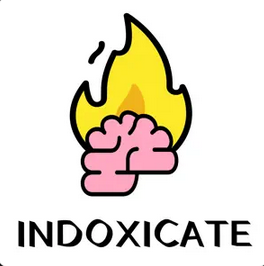The logic of sociocracy


How do you make a decision with a group of people? In some activist circles a sociocratic method of consent* decision making has become popular.
But there continues to be confusion about the core idea behind this method. This core idea is the somewhat misleading concept of consent*. I will explain later why I think it is misleading, and dangerously misleading. But for now, it’s enough to highlight that the notion of consent* has taken on a close to mythical status. I’ve heard almost as many different explications as people explicating it.
Let’s get rid of this. Because the core idea is very simple. The rest is fluff. Once you understand the logic of group decision making, the method of consent* is straightforward.
(Note: I’m using * behind the term ‘consent’ when it’s used in the technical, sociocratic way, to flag that this use of the word is problematic.)
Consent*, majority vote, and consensus
Here is the definition. A decision made by reaching consent* is a matter of absence of disagreement with the proposal. If and only if no one in a group objects to the proposal, the proposal is accepted by the group through consent*.
This way of arriving at a group decision differs from two more familiar methods: majority vote and reaching consensus. Let’s define those in turn:
A decision made by majority vote is a matter of counting: if and only if the most people in a group express agreement with a proposal, the proposal is accepted by the group through majority vote. A decision made by reaching consensus is a matter of unanimous agreement: if and only if everyone in a group expresses agreement with a proposal, the proposal is accepted by the group through consensus.
From logic to practice
These logical differences have practical implications. A mere majority is much easier to attain in a discussion than unanimous acceptance. If you’re with twenty people, you only need eleven people agreeing to have a majority, but you need the agreement of all twenty to reach consensus.
But on the other hand, the ease of reaching a decision by majority is offset by its potential unfairness. Requiring no more than a majority brings a risk that the views of a potentially sizable minority are brushed aside.
This is a trade-off: ease of reaching a decision versus fairness of decision making.
Here lies the main attraction of the consent* method. It steers a middle way: it is easier to reach consent* than it is to reach consensus (as I’ll explain in a minute). But consent* is still far less tyrannical than majority vote. The method of consent* respects the minority—at least in principle.
Why is consent* easier than consensus?
So why is consent* easier than consensus? Well, for consent* it is not necessary to get everyone to expresses agreement with the proposal to accept it. All you need is an absence of expressions of disagreement. The following is crucial to understand the method of consent*: it is possible for someone neither to express agreement nor to express disagreement. They can simply stay on the fence, as they say, and stay silent.
This point again is a purely logical one. If asked what your view is on a proposal to act, you logically have three possible reactions. You can reply it is a good idea to carry out the action. But you can also not reply that it is a good idea to carry out the action. And if you do not reply that it is a good idea to carry out the action, you can do this in two different ways. On the one hand, you can reply instead that it is not a good idea to carry out the action, but you can also simply not reply at all.
It is typically easier to convince someone not to disagree than it is to convince them to express their agreement. And this is why it is typically easier to reach consent* than it is to reach consensus.
Let me give an example. Together with two friends you are planning a trip to Amsterdam. Your one friend suggests to depart on Friday. But your other friend doesn’t think this is a good idea. They propose to depart a day earlier, on Thursday. As it happens, you are fine with either. But the three of you need to decide, of course. Your other friend now gives a reason why the three of you shouldn’t go on Friday: it would make it very difficult still to go clubbing in the city Friday night. But for you this doesn’t matter at all. You’re going just for a gig on Saturday anyway. When it comes to the question, ‘shall we go on Thursday then?’ you don’t have any objection to make. Your friend hasn’t convinced you that you should go on Thursday, but you don’t see any reason not to either. You just shrug. Assuming that your other friend also doesn’t have an objection, Thursday it is. Consent* has been reached.
I think lots of groups have already been making decisions using this method without knowing anything about consent*. The key thing is just that you let the decision making process be guided by objections (or the absence of any) instead of the attempt to convince everyone that a proposal is really everyone’s best choice.
Criticism
Well, there you have it. That is the method of consent*. But two critical observations are important to make in closing. First, people seem to cram a lot of nonsense on top of this simple logical point.
Even quite good resources on the topic will say things like, “You can think of consent as a version of consensus”. But that of course gets it exactly the wrong way round. Consensus is a situation where everyone agrees, and therefore no one disagrees. Consensus therefore is a version of consent*. Not the other way around, because in a group where no one expresses disagreement it may still be the case that very few people express agreement, so that consent* has been reached while consensus has not.
The same (quite good) source claims that “consent decision making is more clearly defined”. And also this is baffling, at least given the definitions I’ve given of the three contending decision methods. Majority vote, consensus, consent*—each of them is as clearly defined as the others.
I also see often that people take the broader process of presenting a proposal to the group, followed by a round of clarifying questions, followed by the possibility of amendments,… and so on, that that’s all part of the method of consent*. But this is confused. Because the very same process of presentation, discussion and amendment can be used to reach decisions by majority voting or by trying to reach consensus. Sure, it might be good practice to begin by clarifying the proposal before a group makes a decision, but it has nothing to do specifically with consent*, and also without such good practices consent* can be reached, be it with a significant risk of miscommunication.
The term ‘consent’
A second and even more serious objection has to do with terminology. I find it almost inexcusable to use the term ‘consent’ for a decision making method guided by the absence of expressions of disagreement.
The English word ‘consent’ has a common use. Consent is permission for something to happen or agreement to do something. In most cases people need to consent to be operated upon in a hospital, for example. This means they need explicitly to agree to undergoing the treatment. The same holds for having sex. All people involved explicitly need to want to engage in sexual intercourse. Merely not expressing an objection is not enough. Consent, as it is ordinarily understood, is the difference between consensual sex and sexual abuse.
To co-opt this existing term for a practice that is very different runs the risk of confusing people. In the worst case, it may make it seem that a group or an individual consented to doing something whereas in fact they merely (for whatever reason) didn’t voice an objection. This is potentially harmful and abusive. It runs directly against the self-stated aim of sociocracy, to create psychologically safe environments and productive organizations.
I think that a decision making method guided by the absence of objections has its advantages. But I strongly suggest that we avoid co-opting the term ‘consent’ to label it. Don’t try to make a proposal seem someone’s free choice when this free choice has never been expressed.